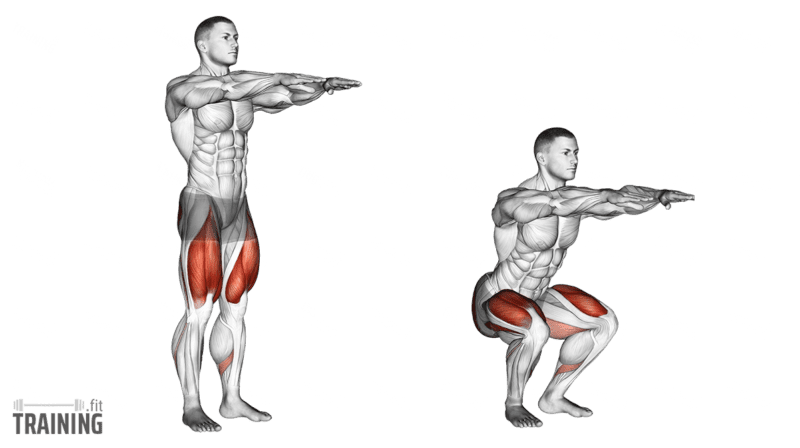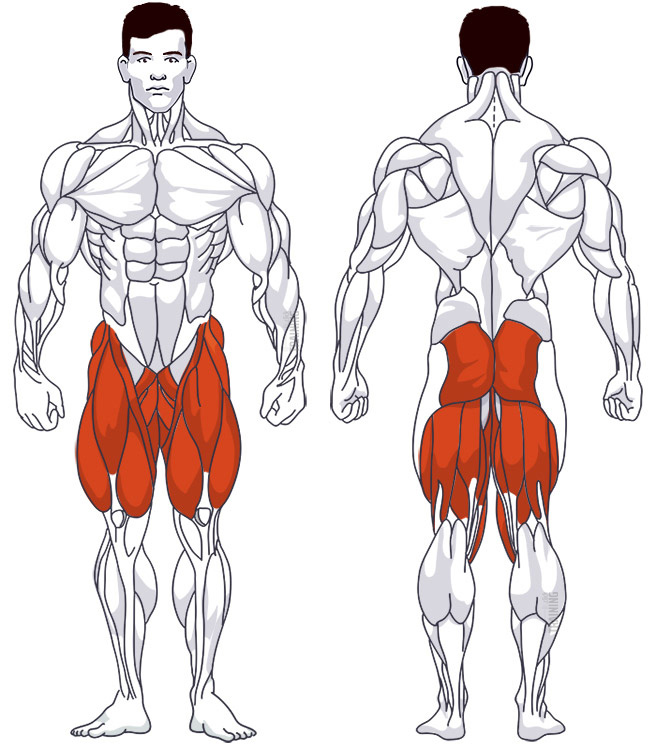Squats
Compound exercise, Body weightOverview

Main muscles
- Thigh: Long adductor muscle
(Musculus adductor longus) - Thigh: Quadriceps
(Musculus quadriceps femoris) - Thigh: Thigh flexor
(Musculus biceps femoris) - Buttocks: Large gluteus maximus
(Musculus gluteus maximus)
Training plans
Here you can find example plans for squats training:
Squats: Basics and alternatives

Involved main muscle groups:
Squats
Everyone knows the ultimate leg training classic: squats. You bend your knees and lower your butt as if you’re sitting down, then stand back up. Squats are a crucial exercise in strength training and work many different muscles. This exercise primarily targets the front and rear thighs, as well as the glutes. The lower legs and lower back are also involved.
This page focuses on squats without equipment, which are perfect for beginners looking to learn the movement safely and easily. Squats can also be performed with added weight, a more common variant in bodybuilding. For more ambitious muscle building, you can choose barbell squats (including front squats) or dumbbell squats.
Correct execution
Bodyweight squats are relatively easy to perform since it’s a movement we use more or less regularly in everyday life. The key is maintaining good balance and a straight back throughout the exercise.
Video tutorial
Step-by-step instructions
Stand on a level surface with your feet shoulder-width apart.
Extend your arms straight out in front to help stabilize your body during the workout.
Lower your butt by bending your knees as if you’re sitting down, allowing your butt to move back slightly.
Keep your shoulders vertically in the same position, allowing your lower back to arch slightly.
Stop the downward movement when your thighs are parallel to the floor.
Stand back up by extending your knees and straightening your upper body.
Common mistakes
Maintaining proper upper body posture is crucial during the exercise. Ensure your knees stay behind your toes as you bend them, and let your butt push back a little. Your upper body should remain in the same vertical position, which means you need to lean your lower back slightly forward. Avoid keeping your upper body completely straight, as this reduces balance and the training effect.
Your upper back posture is also vital for proper execution. Don’t arch your back; keep it straight.